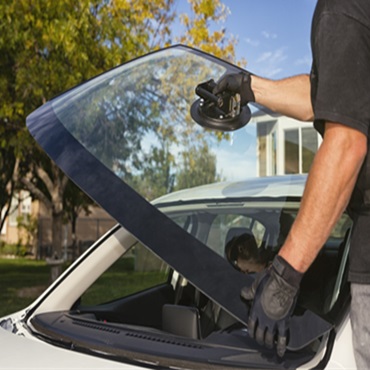A damaged windshield can lead to accidents due to impaired visibility and compromised structural integrity. Cracks and chips can distract the driver, and in the worst cases, a severely damaged windshield might shatter during driving, causing loss of control.
The Importance of Car Windshield Replacement: Ensuring Clear and Safe Driving
Your car's windshield plays a vital role in your safety and comfort while driving. It provides a clear view of the road, shields you from the elements, and contributes to the structural integrity of your vehicle. However, when your windshield is damaged beyond repair, prompt replacement becomes crucial. In this blog, we'll explore why replacing a damaged windshield is essential, the dangers of neglecting it, and the best practices for ensuring a seamless replacement process.

Why Windshield Replacement is Essential
1). Maintaining Structural Integrity
The windshield is not just a window; it is a critical component of your car's structural framework. In the event of a collision, a well-installed windshield can prevent the roof from collapsing, protecting you and your passengers. A compromised windshield, on the other hand, weakens this structure, increasing the risk of severe injury during an accident.
2) Ensuring Clear Vision
A cracked or shattered windshield can obstruct your view, making it difficult to see the road ahead clearly. This impairment can lead to dangerous driving conditions, especially in poor weather or at night. Replacing a damaged windshield restores your unobstructed view, enhancing your ability to drive safely.
3) Complying with Safety Regulations
Many regions have strict safety regulations regarding windshield condition. Driving with a damaged windshield can result in fines and penalties. Ensuring your windshield is in top condition helps you comply with these laws and avoid unnecessary legal troubles.
The Dangers of Neglecting Windshield Replacement
Increased Risk of Accidents
Higher Repair Costs
Neglecting minor damage can lead to more extensive problems that are costlier to fix. A small chip can quickly spread into a large crack, necessitating a full windshield replacement rather than a simple repair. Addressing the issue promptly can save you significant amounts of money in the long run.
Compromised Airbag Deployment
In many vehicles, the windshield helps support the passenger-side airbag during deployment. A weakened windshield may not withstand the force of an airbag, reducing its effectiveness and increasing the risk of injury during an accident.
Best Practices for Windshield Replacement
1). Choose a Reputable Service Provider
Select a professional auto glass service with certified technicians. They have the expertise and equipment to ensure your new windshield is installed correctly and meets all safety standards.
2). Use Quality Glass
Ensure that the replacement windshield is made from high-quality, OEM (Original Equipment Manufacturer) or equivalent glass. This guarantees the best fit and durability, maintaining the original safety standards of your vehicle.
3). Follow Aftercare Instructions
After the replacement, follow any aftercare instructions provided by the technician. This may include avoiding car washes, rough terrain, or extreme temperature changes for a certain period to allow the adhesive to cure properly.
4). Regular Maintenance
Regularly inspect your windshield for any signs of damage. Keeping your windshield clean and free from obstructions can also help you spot any issues early on, allowing for timely repairs or replacements.
Conclusion
Replacing a damaged windshield is not just about maintaining the aesthetics of your car; it is a crucial aspect of ensuring your safety on the road. By understanding the importance of windshield replacement, recognizing the dangers of neglect, and following best practices,
